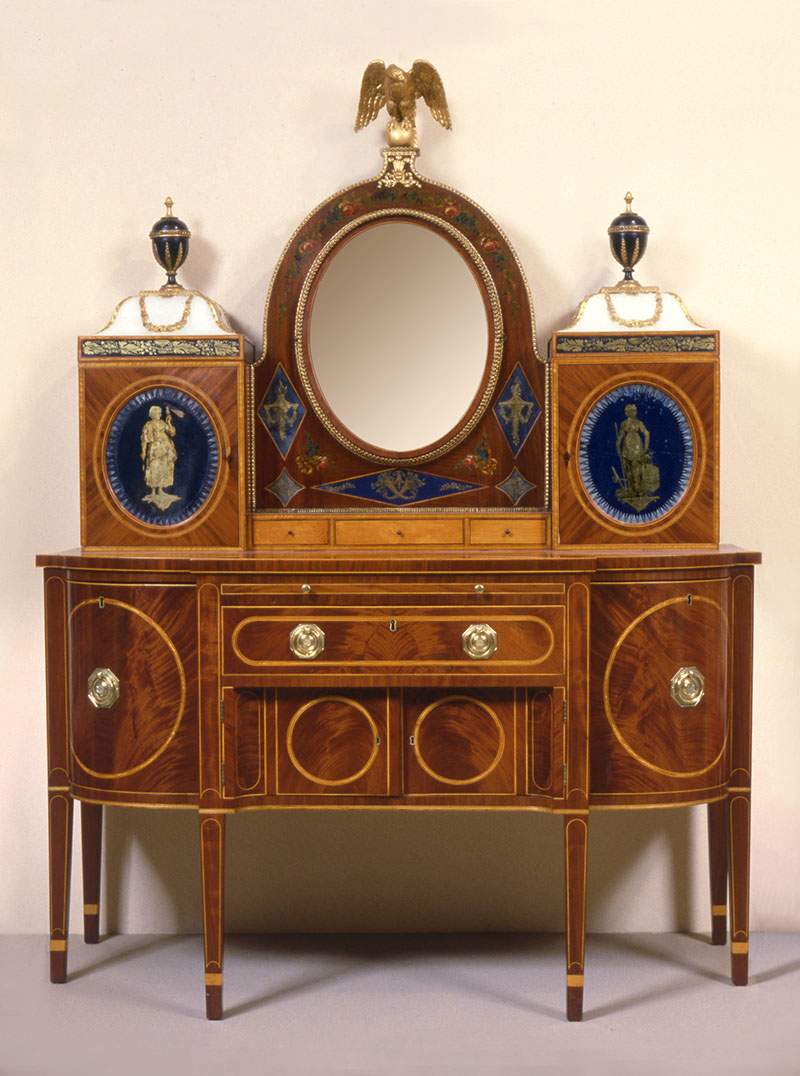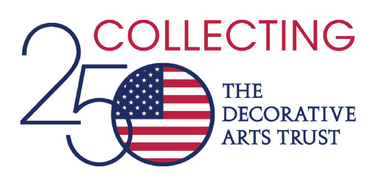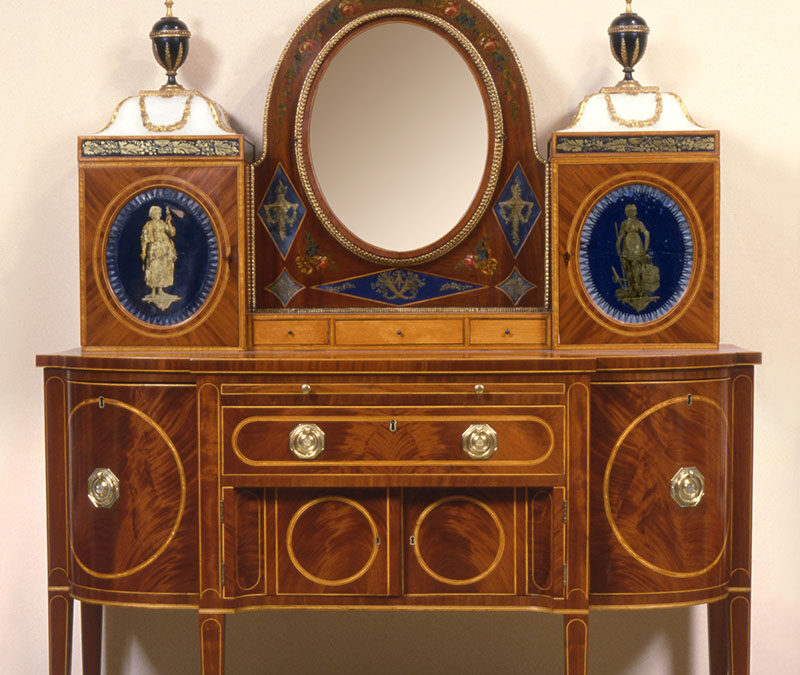Lady’s Cabinet Dressing Table

| Maker | Attributed to William Camp (fl. 1801–22) |
| Date of Creation | 1800–10 |
| Location | Baltimore, Maryland |
| Materials | Mahogany, satinwood; poplar, red cedar |
| Institution | Maryland Center for History and Culture |
| Credit Line | Eleanor Cohen Collection |
| Accession Number | MCHC 1938.7.8 |
| Photo Credit | Maryland Center for History and Culture |
This dressing table, one of the finest pieces of American furniture, demonstrates the outstanding sophistication and skill of Baltimore cabinetmakers in the early 1800s. The overall design is inspired by plate 49 of Thomas Sheraton’s The Cabinetmaker and Upholsterer’s Drawing Book, but the Baltimore maker who adapted the design incorporated a fully carved and gilded American eagle as a symbol of Independence and the new nation. Verre églomisé (reverse painted glass) panels depict the allegorical figures of Commerce and Industry, frequently used to describe Baltimore’s rise as the economic and style center of Maryland in the early Federal era.
Eleanor Septima Cohen (1858–1938) gave and bequeathed a highly important group of objects to the Maryland Center for History and Culture, including several pieces of furniture owned by her great-grandparents Mr. & Mrs. Solomon Etting, who were among the founders of Baltimore’s Jewish community. Solomon Etting (1764–1847) was a successful merchant who became involved in banking and shipping, organized the Baltimore East India Company and was a founder of the B&O Railroad. Active in civic and political affairs, Etting was one of the first Jews in Maryland to hold elected office. He married Rachel Gratz (1794–1813), the daughter of Bernard Gratz, one of the wealthiest merchants of Philadelphia. The Ettings moved to a large new house at 278 Baltimore Street in 1803 and probably acquired this dressing table around that time.

